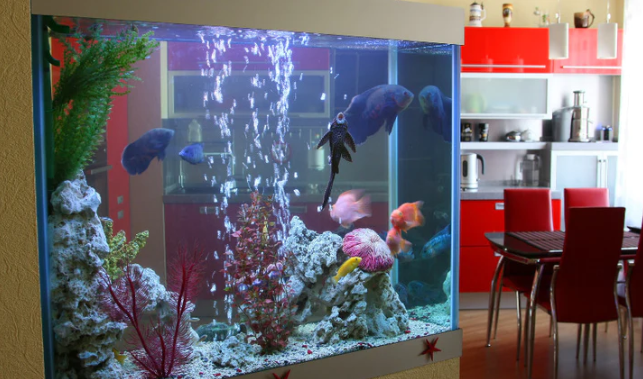The Essential Guide to Creating a Thriving Aquarium Ecosystem
- Posted on

Creating a thriving aquarium ecosystem is more than just having fish swimming in water—it's about cultivating a balanced and sustainable environment where fish, plants, and other aquatic organisms can flourish. Whether you're a seasoned aquarist or just starting out, this essential guide will provide you with the knowledge and tips to create a thriving aquarium ecosystem.
- Start with Proper Planning: Before setting up your aquarium, take time to plan. Consider the size of your tank, the type of fish and plants you want to keep, and the overall design and layout. Research the specific care requirements of the species you're interested in and ensure they are compatible with each other.
- Water Quality Management: Maintaining excellent water quality is crucial for the health and well-being of your aquarium ecosystem. Monitor parameters such as temperature, pH level, ammonia, nitrite, and nitrate levels regularly. Perform water tests and make adjustments as needed to keep the water parameters within the appropriate range for your fish and plants.
- Invest in Quality Filtration: A reliable filtration system is essential for a thriving aquarium ecosystem. It helps to remove waste, toxins, and other impurities from the water. Choose a filtration system that is appropriate for the size of your tank and the needs of your fish and plants. Regularly clean and maintain the filter to ensure optimal performance.
- Select the Right Fish Species: Choose fish species that are compatible with each other in terms of temperament, size, and water parameter requirements. Consider the adult size of the fish and ensure your tank is spacious enough to accommodate their needs. Avoid overstocking the tank, as it can lead to stress, poor water quality, and aggression among fish.
- Promote Plant Growth: Aquatic plants not only enhance the beauty of your aquarium but also play a crucial role in maintaining a thriving ecosystem. They provide oxygen, absorb excess nutrients, and offer shelter for fish and other organisms. Select plant species that are suitable for your aquarium's lighting and substrate. Provide proper fertilization and ensure adequate lighting and CO2 levels to support healthy plant growth.
- Establish a Balanced Food Chain: A thriving aquarium ecosystem requires a balanced food chain. Consider the dietary needs of your fish and provide a varied and balanced diet. Some fish may require live or frozen foods, while others thrive on high-quality flakes or pellets. Introduce algae-eating organisms, such as snails or shrimp, to help control algae growth naturally.
- Regular Tank Maintenance: Perform regular tank maintenance to keep the ecosystem in optimal condition. Clean the tank glass, remove debris, and perform water changes to maintain water quality. Trim and prune plants as needed, and regularly inspect and clean equipment such as filters, heaters, and air pumps.
- Avoid Overmedication: When treating any health issues in your aquarium, always follow the instructions provided by reputable sources or consult with a professional. Avoid overmedicating the tank, as it can disrupt the delicate balance of the ecosystem and harm beneficial organisms.
- Observe and Adjust: Regularly observe the behavior and health of your fish, plants, and other organisms. Look out for signs of stress, disease, or nutrient deficiencies. Make adjustments as necessary, such as modifying feeding routines, adjusting lighting, or addressing any water quality issues promptly.
- Be Patient and Enjoy the Journey: Creating a thriving aquarium ecosystem takes time, patience, and careful attention. Enjoy the journey and appreciate the beauty of your aquatic world. Learn from the challenges you may encounter and continuously educate yourself about the needs of your fish and plants.
By following this essential guide, you'll be well on your way to creating a thriving aquarium ecosystem. Remember, each aquarium is unique, and it may take some trial and error to find the perfect balance.
